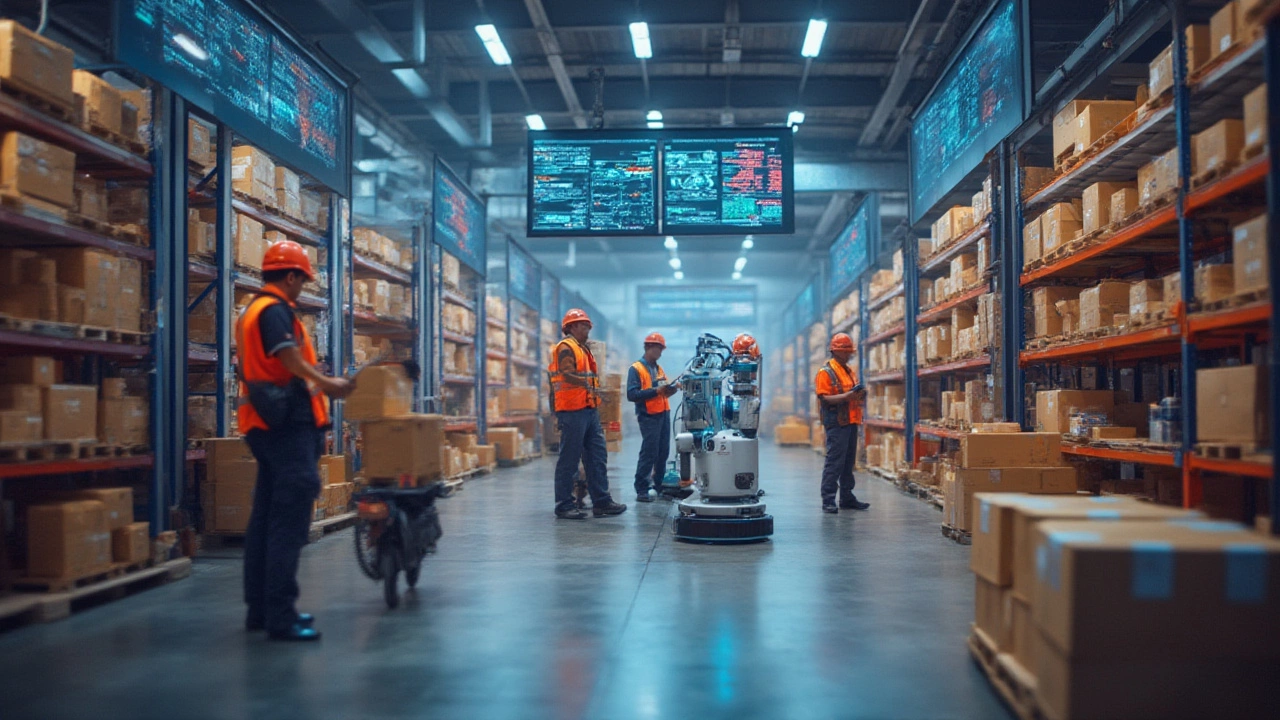E‑Logistics Made Simple: How to Ship Faster and Smarter
If you’ve ever waited for a package that seemed to crawl at a snail’s pace, you know how frustrating logistics can be. The good news? Today’s e‑logistics blends cheap tech with clever processes to cut down that wait time. Below you’ll find the core ideas you need to understand the digital side of shipping and a few ready‑to‑use tricks that work for anyone.
Why Digital Tools Matter in Modern Shipping
First off, think of e‑logistics as the brain behind every click‑to‑order experience. Instead of paper records and random truck routes, businesses now use software that tracks inventory in real time, predicts demand, and automatically selects the fastest carrier. A simple dashboard can show you where a parcel is, how long it’ll take, and even alert you to delays before they happen. That visibility saves money, keeps customers happy, and reduces the guesswork that used to dominate the industry.
One practical example is using a cloud‑based shipping platform that integrates with major carriers like UPS, FedEx, and DHL. When you enter a package’s weight and destination, the system instantly compares rates, cut‑off times, and delivery windows, then suggests the best option. No more manual price‑checking or surprise extra fees – the right choice shows up on the screen.
Quick Wins to Speed Up Your Own Shipments
Even if you’re not running a massive warehouse, you can still tap into e‑logistics benefits. Here are three low‑effort moves that make a big difference:
- Print labels at home. Most carriers let you generate a label online and drop the package off at a nearby store. It cuts off the time spent standing in line, and you often get a small discount for pre‑paying.
- Use Saturday delivery. If you need a package by Monday, shipping on Friday night with a Saturday service can shave a whole day off the timeline. Check the carrier’s cut‑off time – it’s usually earlier than you think.
- Batch your orders. Grouping shipments into a single batch lets you negotiate bulk rates and reduces the number of trips to the post office. A few minutes of planning each week can save dollars and time.
Another tip is to take advantage of tracking alerts. Sign up for SMS or email notifications from your carrier. The moment a package moves out of the hub, you get a ping, so you can plan around it – perfect for home‑based sellers who need to know when to expect a delivery.
When you’re ready to level up, consider a supply‑chain management (SCM) tool. Modern SCM software includes route optimization, warehouse slotting, and automated reorder points. Even a starter plan can pull data from your sales platform and suggest when to restock popular items, so you never run out of the products your customers love.
Finally, don’t forget the human side. Clear packaging instructions, sturdy boxes, and a simple return label go a long way toward preventing damage and frustration. The fewer hiccups, the smoother the digital logistics chain runs.
Bottom line: e‑logistics isn’t just for big retailers. With a few smart tools and habits, anyone can ship faster, keep costs low, and delight customers. Start with the quick wins, watch your delivery times shrink, and let the technology do the heavy lifting.
E-logistics is shaking up the way businesses handle shipping and delivery—cutting costs, speeding up processes, and improving reliability, all with smart digital tools.
Jul, 21 2025
E-logistics is revolutionizing how businesses handle supply chains in e-commerce by improving speed, efficiency, and flexibility. This system leverages technology to enhance order processing, inventory management, and delivery, making online shopping more seamless for consumers. By adopting e-logistics, businesses can reduce costs, increase customer satisfaction, and stay competitive. The integration and automation of logistics functions are key in efficiently managing growing demands. Understanding the advantages of e-logistics can help businesses optimize their operations in the digital marketplace.
Mar, 24 2025
In the fast-paced world of online shopping, e-logistics plays a crucial role in ensuring that products reach customers smoothly and efficiently. It involves a range of processes from inventory management to real-time tracking systems. By leveraging technology, businesses can streamline their supply chains and improve customer satisfaction. This article dives deep into the components, benefits, and challenges of e-logistics in e-commerce.
Dec, 3 2024


